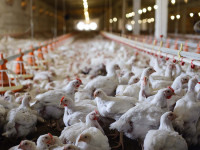Money
95.5 percent of Nepalis have an electricity connection, report says
Nepal ranked third among the top 20 countries with the highest share of solar lighting progress with 15 percent of the population obtaining power through solar grids.
Prahlad Rijal
Electricity had reached 95.5 percent of Nepal’s population as of 2017, according to the Energy Progress Report. Only 1.3 million out of 29 million Nepalis remain to be connected to an electricity supply. In 2010, only 65 percent of the population had an electricity connection.
Officials said Nepal was expected to achieve 100 percent access to electricity within a few years, well ahead of the target year of 2030 set by Sustainable Development Goal 7.
Nepal’s access to electricity increased at an annual rate of 4.3 percent, which is much higher than the global average of 0.8 percent, as per the Energy Progress Report, released last week by the five Sustainable Development Goal stakeholder agencies—International Energy Agency, International Renewable Energy Agency, United Nations Statistics Division, World Bank and World Health Organisation.
The report said that the global electrification rate rose to 89 percent in 2017 from 83 percent in 2010, falling short of the target rate required to reach universal access by 2030.
Over the review period, 99 percent of Nepal’s urban population enjoyed access to electricity and 95 percent of rural people are currently connected with a mix of grid and off-grid systems. Universal access to clean cooking solutions will help to prevent some 3.8 million premature deaths each year, primarily among women and children, from exposure to household air pollution, the report said.
“Clean cooking solutions reduce deforestation and lower climate-changing emissions. For these and other co-benefits to be realised, however, clean cooking must be integrated into national policy, by scaling up solutions, increasing public and private investment in clean cooking, and enhancing multi-sector collaboration,” the report states.
Nepal ranked top among the set of access-deficit countries—Afghanistan, Bangladesh, Fiji, Mongolia among others—which provide their populations with access to electricity from off-grid sources. Around 11 percent of Nepal’s population is reliant on mini-biogas, mini-hydropower plants, and solar mini-grids for energy consumption.
Nepal ranked third among the top 20 countries with the highest share of solar lighting progress with 15 percent of the population obtaining power through solar grids. According to officials, Nepal’s rural electrification schemes and increasing use of small solar panels for lighting in remote areas has contributed to the increased access to electricity.
“The campaign to rid rural households of firewood and provide clean energy through mainly solar and small scale hydel plants by 2022 has been effectively meeting its annual targets,” said Ram Prasad Dhital, former executive director of the Alternative Energy Promotion Centre.
“Also, the Nepal Electricity Authority has been consistently achieving the target of increasing access by expanding the grid to remote places through rural electrification schemes.” According to Dhital, increased installation of 10-watt solar panels for household lighting has also contributed to the growth of the electrification rate.
Recently, Energy Minister Barsha Man Pun reiterated the government’s plan to provide access to energy to 100 percent of the population in the next five years.
“In five years, we intend to provide access to 100 percent of the population through a mix of grid and off-grid systems,” the minister told the World Hydropower Congress in Paris recently. “In the meantime, we are implementing several transmission and distribution system reinforcement projects to provide reliable electricity services to the people.”
As per the Nepal Electricity Authority’s statistics, only eight districts—Bajura, Humla, Jumla, Kalikot, Mugu, Dolpa, Rukum (East) and Solukhumbu—remain to be connected to the national grid. Among them, authorities plan to connect Bajura, Rukum (East) and Solukhumbu to the national grid by the end of this fiscal year. Currently, these districts get their power from small and isolated hydel plants. The Energy Progress Report states that between 2018 and 2030, the annual average investment will need to reach approximately $55 billion to expand energy access, about $700 billion to increase renewable energy, and $600 billion to improve energy efficiency.




 18.12°C Kathmandu
18.12°C Kathmandu













%20(1).jpg&w=300&height=200)
